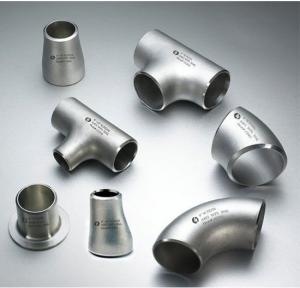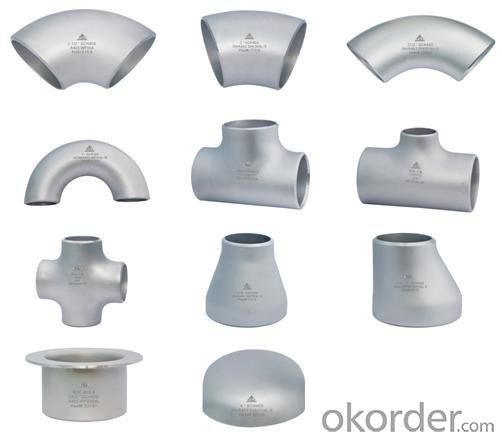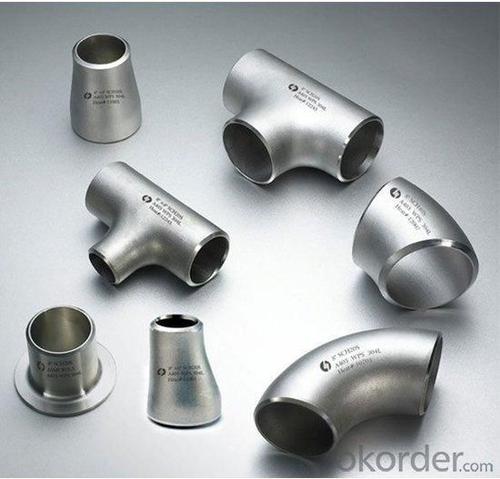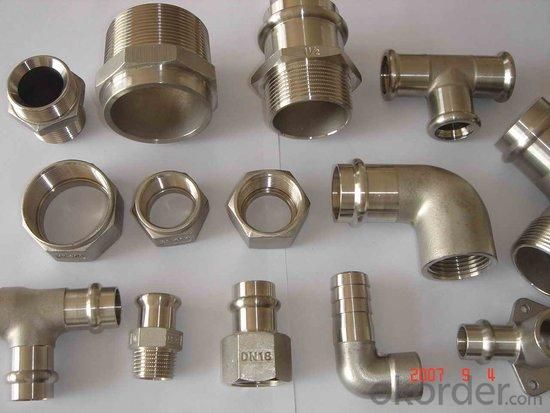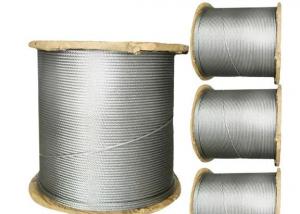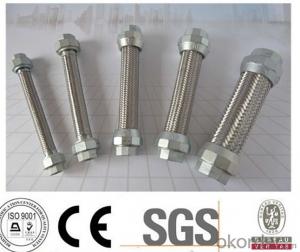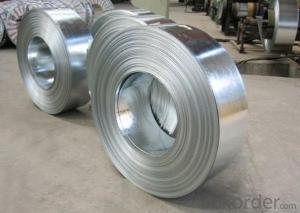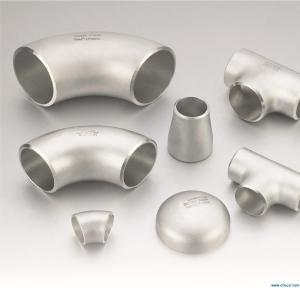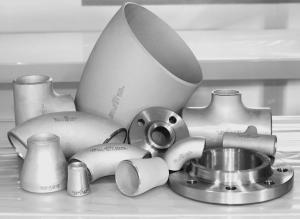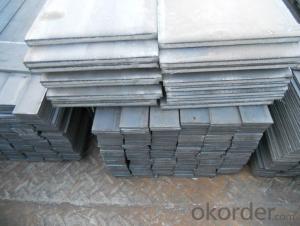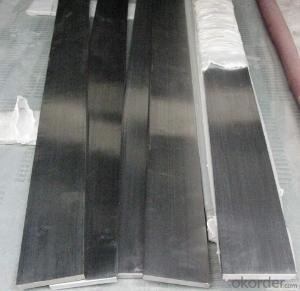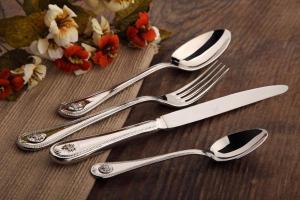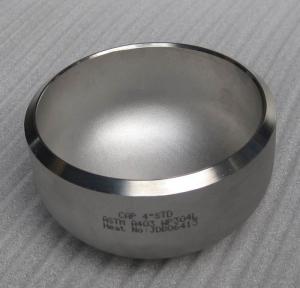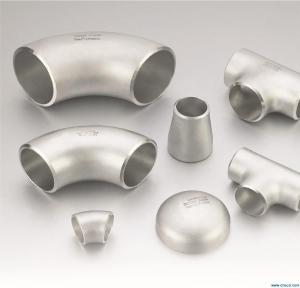Stainless Steel Stub Ends
- Loading Port:
- China Main Port
- Payment Terms:
- TT or LC
- Min Order Qty:
- 5 Pieces pc
- Supply Capability:
- 10000 Pieces Per Month pc/month
OKorder Service Pledge
OKorder Financial Service
You Might Also Like
Stainless Steel Fittings
Specifications Features:
1) Carbon steel fitting and stainless steel fitting
2) Standard: ASME, ANSI, API, JIS
1. BUTT WELDED FITTING:
2. Production acc. to the standard of GB /ASTM / ASME / DIN / JIS
ASTM B 16.9 /16.11 B 16.28 JIS B 2311/2220 DIN2617/2616/2615/2391
3. Types: Elbows, seamless and welded, LR & SR ,Bend -Equal and reducing Tees,
seamless and welded - Concentric and eccentric Reducers,seamless and welded -Caps
4. Wall thickness: From Sch5 up to Sch160/STD/XS/XXS
5. Material Grades: A403,WP304, WP304L, Wp316, WP316L, A234WPB
6. Dimensions: Seamless: from 1/2' up to 24'
7. size: From 1/2" up to 72"
Outer packing:Seaworthy plywood case
|
Grade |
TP304,TP304L,TP321,TP316L,TP310S etc. |
|
connection |
welding |
|
techniques |
forged |
|
Surface finishing |
180/240/320/400 grit |
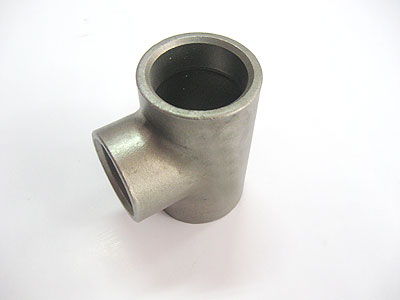
- Q: Can stainless steel flats be used in pharmaceutical manufacturing?
- Pharmaceutical manufacturing can indeed utilize stainless steel flats. The reason behind this preference lies in the exceptional resistance to corrosion, durability, and ease of cleaning that stainless steel offers. Its suitability extends to various pharmaceutical procedures like mixing, blending, granulation, and drying. In fact, stainless steel flats frequently find themselves employed in the creation of equipment and vessels such as tanks, reactors, mixers, and trays, which directly interact with pharmaceutical products. Moreover, stainless steel flats are capable of enduring high temperatures while maintaining their structural integrity, rendering them ideal for pharmaceutical manufacturing applications that involve sterilization or high-temperature processes. All in all, stainless steel flats represent a reliable and extensively utilized material within the pharmaceutical industry.
- Q: Can stainless steel flats be used in cryogenic applications?
- Yes, stainless steel flats can be used in cryogenic applications. Stainless steel has excellent low-temperature properties, such as good strength, ductility, and resistance to corrosion, making it suitable for use in cryogenic environments.
- Q: What are the different types of surface inspection methods available for stainless steel flats?
- Stainless steel flats can be inspected using a range of surface inspection methods, each offering unique advantages and applications. The commonly employed techniques include: 1. Visual Inspection: By visually examining the surface, one can identify visible defects like scratches, dents, or irregularities. This method can be executed with the naked eye or with the aid of magnifying tools like microscopes. 2. Magnetic Particle Inspection (MPI): MPI is a non-destructive testing method used to detect surface and near-surface defects. It involves applying a magnetic field and a magnetic particle solution to the surface. These particles gather around any magnetic leakage fields caused by defects, making them visible under suitable lighting conditions. 3. Liquid Penetrant Inspection (LPI): Another non-destructive testing method commonly employed for surface inspection is LPI. In this technique, a colored dye or liquid penetrant is applied to the surface. The penetrant seeps into any surface defects, and after a specific dwell time, the excess penetrant is removed, and a developer is applied to make the defects visible. 4. Eddy Current Testing (ECT): ECT is a non-destructive testing method particularly useful for detecting surface cracks and defects in conductive materials like stainless steel. It involves inducing an alternating current into a coil, generating a magnetic field that interacts with the material's surface. Any change in the magnetic field, caused by surface defects, is then detected and analyzed. 5. Ultrasonic Testing (UT): UT is a widely employed non-destructive testing method that utilizes high-frequency sound waves to inspect the internal and external surfaces of stainless steel flats. By analyzing the echoes produced by the sound waves as they bounce off the material's surface, various defects such as cracks, inclusions, and discontinuities can be detected. 6. X-ray Inspection: X-ray inspection is a commonly used method for surface inspection of stainless steel flats. It involves utilizing X-ray radiation to penetrate the material and create an image of its internal structure. This technique is particularly effective in detecting internal defects that may not be visible during visual inspection. It is crucial to consider various factors when selecting the appropriate surface inspection method, including the type of defects to be detected, the size and thickness of the stainless steel flats, and the required level of sensitivity and accuracy.
- Q: How do stainless steel flats resist thermal expansion and contraction?
- Stainless steel flats are known for their exceptional resistance to thermal expansion and contraction due to their unique composition and structure. The primary reason behind this resistance is the presence of chromium in stainless steel. Chromium forms a thin, protective oxide layer on the surface of the steel, known as a passive film. This passive film acts as a barrier, preventing the diffusion of oxygen and other elements into the steel, thereby making it highly resistant to corrosion. When exposed to high temperatures, stainless steel flats experience minimal expansion due to the stability of the passive film. This oxide layer remains intact and does not allow the steel to expand significantly, thus maintaining dimensional stability. Similarly, during cooling or contraction, the passive film prevents the steel from contracting excessively, ensuring that the flats retain their shape and size even with drastic temperature changes. Furthermore, stainless steel flats also contain other alloying elements such as nickel and molybdenum, which enhance their thermal stability. These elements help to strengthen the steel structure and improve its resistance to thermal expansion and contraction. Overall, stainless steel flats' ability to resist thermal expansion and contraction is attributed to the presence of the protective passive film and the incorporation of alloying elements. This makes stainless steel flats a reliable choice in various applications where dimensional stability and resistance to temperature changes are crucial.
- Q: Can stainless steel flats be used in medical equipment?
- Yes, stainless steel flats can be used in medical equipment. Stainless steel is known for its excellent corrosion resistance, durability, and ability to withstand high temperatures, making it a suitable choice for medical devices and equipment that require sterilization and frequent cleaning. Additionally, stainless steel is biocompatible, meaning it does not cause adverse reactions when in contact with the human body, making it a safe and reliable material for medical applications.
- Q: Can stainless steel flats be machined?
- Yes, stainless steel flats can be machined. Stainless steel is a versatile material that can be easily machined using various processes such as milling, turning, drilling, and grinding, among others. However, it is important to note that stainless steel is a hard material and requires appropriate cutting tools, techniques, and cooling methods to ensure successful machining operations.
- Q: Can stainless steel flats be used in automotive exhaust systems?
- Yes, stainless steel flats can be used in automotive exhaust systems. Stainless steel is a popular choice for exhaust system components due to its excellent corrosion resistance, high temperature strength, and durability. Stainless steel flats are often used to fabricate exhaust pipes, mufflers, and other components that need to withstand the extreme heat and corrosive gases produced by the engine. Stainless steel also offers aesthetic benefits, as it can be polished to a high shine, enhancing the overall appearance of the exhaust system. Additionally, stainless steel flats can be easily welded, allowing for efficient and reliable fabrication of exhaust system components.
- Q: Can stainless steel flats be painted or coated?
- Stainless steel flats have the capability to be painted or coated, although it should be noted that stainless steel naturally resists corrosion and staining, rendering the need for painting or coating unnecessary for these purposes. Moreover, the smooth and non-porous surface of stainless steel can present challenges with regards to the adherence of paint or coatings. Nevertheless, if there exists a specific rationale or preference to paint or coat stainless steel flats, it is indeed feasible. In order to ensure proper adhesion and durability, the stainless steel surface must be thoroughly cleaned and prepared, and a suitable primer or coating specifically designed for stainless steel should be utilized. It is also advisable to seek guidance from professionals or manufacturers to determine the most suitable and effective approach for painting or coating stainless steel flats.
- Q: What is the fire resistance of stainless steel flats?
- Stainless steel flats generally have a high level of fire resistance. This is primarily due to the composition of stainless steel, which is an alloy made up of iron, chromium, and other elements. The addition of chromium provides stainless steel with its characteristic resistance to corrosion and high temperature oxidation. When exposed to fire, stainless steel flats form a thin, adherent oxide layer on the surface, known as a passive layer, which acts as a protective barrier against further oxidation. This passive layer helps to maintain the structural integrity of the stainless steel flats, even at elevated temperatures. Therefore, stainless steel flats can withstand high temperatures and are less likely to warp, melt, or collapse in the event of a fire, making them a preferred choice for applications where fire resistance is a crucial factor. However, it is important to note that the fire resistance of stainless steel flats may vary depending on the grade and thickness of the material.
- Q: What are the common surface finish tolerances for stainless steel flats?
- The common surface finish tolerances for stainless steel flats typically range from 1-10 microinches (25-250 micrometers) for commercial applications. However, tighter tolerances of 0.5-1 microinch (12.5-25 micrometers) are often required for high precision or specialty applications.
1. Manufacturer Overview
| Location | Zhejiang, China |
| Year Established | 2010 |
| Annual Output Value | above US$16 million |
| Main Markets | East Asia, Middle East. |
| Company Certifications |
2. Manufacturer Certificates
| a) Certification Name | |
| Range | |
| Reference | |
| Validity Period |
3. Manufacturer Capability
| a) Trade Capacity | |
| Nearest Port | Shanghai |
| Export Percentage | |
| No.of Employees in Trade Department | above 10 people |
| Language Spoken: | English, Chinese |
| b) Factory Information | |
| Factory Size: | about 30000 square meter |
| No. of Production Lines | above 7 |
| Contract Manufacturing | OEM Service Offered |
| Product Price Range | Average |
Send your message to us
Stainless Steel Stub Ends
- Loading Port:
- China Main Port
- Payment Terms:
- TT or LC
- Min Order Qty:
- 5 Pieces pc
- Supply Capability:
- 10000 Pieces Per Month pc/month
OKorder Service Pledge
OKorder Financial Service
Similar products
Hot products
Hot Searches
Related keywords
